Make “working together” work better.
Pair work, group work or teamwork are frequent features of classroom practice across all age ranges. The essential purpose of collaborative learning is the co-construction of learning; to make meaning together. Many of you will have recognised the importance of collaboration through the recent BBC 2 series The Family Brain Games where families undertake cognitive games designed to test not just how smart they are but ‘how collective intelligence emerges from a group dynamic’. The series has shown, amongst other things, that success comes from people listening carefully to each other, sharing and adapting their ideas and working harmoniously together.
Ron Berger, of Austin’s butterfly fame, emphasises the importance of being an effective and supportive team member.
“Prioritizing this collaboration – which is built on a foundation of relationship, trust, and effective communication – is a key to deeper instruction. Collaborative grappling with compelling problems and ideas strengthens students’ connections to each other, the classroom, and school and greatly increases their engagement with learning.” Ron Berger, Libby Woodfin, and Anne Vilen, Learning That Lasts.
As teachers we can’t expect good collaboration to just happen. The requisite skills have to be cultivated through deliberate and persistent practice, discussion, modelling, and guidance. Some students learn about social interaction at home, but many don’t get such grounding. Nevertheless, all students need to practise and develop the aspects of being an effective social learner and team player in school.
At its most sophisticated being a good collaborator moves from learning ‘in a team’ to learning ‘as a team’; an invaluable life skill.
In the second of this short series around collaboration in classrooms we look briefly at some sound beginnings for developing social learners and team players.
1 Explore a range of learning relationships
- Help your students to feel safe in the classroom and come to know and understand each other better
- Have them talk with each other about their interests, their likes and hopes, their families and so forth
- Enable students to explore the different groups/teams/choirs they learn with; look at their similarities and differences in how they work
- Ensure students feel the classroom is a helpful and safe place to learn with others
- Make sure students know who and how people in the school can help them
- Explore the behaviours that help them work effectively alone or in groups
- Help students to understand other people’s points of view
- What might you do to help students feel they belong in a classroom?
For ‘getting to know you’ activities visit.
https://www.teachstarter.com/gb/blog/classroom-getting-to-know-you-icebreaker-games-gb/
https://youthgroupgames.com.au/top-ten-get-to-know -you-games/
2. Show yourself as a good collaborator
- Students learn much by imitating others and so will learn much from absorbing your own collaboration skills
- Try setting up a challenge that you don’t know the answer to and join in the group as a learner without taking over or leading the activity
- During the challenge try to act out some of these positive learning behaviours:
- Think aloud to explore possibilities…’what about, what if, could it be?’
- Show willingness to change your mind…’ I used to think… but now I think…Oh! that’s a better idea’
- Disagree politely…’I don’t/can’t agree with that because…’
- See things from other people’s point of view…’I see where you are coming from. I get why you think that. I don’t agree with xxx but can understand why you think that’
- Listen attentively…’I understood most of what you said but could you just say the xxx bit again? Can I just clarify what I think you said.’
- Which of these behaviours will your students struggle with most?
- Where do you want to start?
3. Explore and rights and responsibilities to support good relationships
- Build awareness and understanding of collaboration as an important learning behaviour
- Explore why it might be difficult sometimes
- Offer reminders around the classroom about behaviours for learning together
- Develop a charter of matching rights and responsibilities or ground rules for collaboration (the suggestions above will give you a start on this)
- Capture the outcome of these discussions as a prominent wall display
- Ensure everyone has a right to have their voice heard
- Suggest groups nominate someone each day to monitor whether everyone is keeping to the ground rules, and drawing attention to when and how they are being broken
- What else might be important and why?
4. Turn group work into team work
- Start by building students’ confidence by letting them form a team with familiar peers
- Later make groupings more challenging.
- Assign roles to group members before starting a task.
- Ensure that over time students experience a range of roles.
- Familiarise students with the tasks necessary for successful team work and coach your groups into becoming teams by asking questions to nudge the process along:
- What have you got to do?
- What do you know already?
- Have you agreed your goals?
- What will it look like when it’s finished?
- What will tell you it’s good/standout?
- Can you do that in the time?
- What resources do we have in the classroom that might help?
- Who is going to do what?
- What makes you think you are on the right lines?
- How might you improve that bit?
- How well have you worked as a team?
Visit:
http://en.wikipedia.org/wiki/Team_Role_Inventories#Belbin_Team_roles
http://www.kaganonline.com/free_articles/
Look ahead
- Which of the above ideas will work best with your class or group of students?
- Make a plan for what you will try with next year’s classes
- Notice what happens as you make the changes.
- Build up your observations (videos are good) of students accumulating these valuable skills over time.
Next week we will explore more about the language of collaboration and how you can start putting this into action in your classroom. We would love to hear about any of your trials and triumphs, tricks of the trade, or tripping points when putting collaboration into practice; contact us here or on our Facebook page.

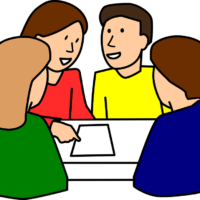
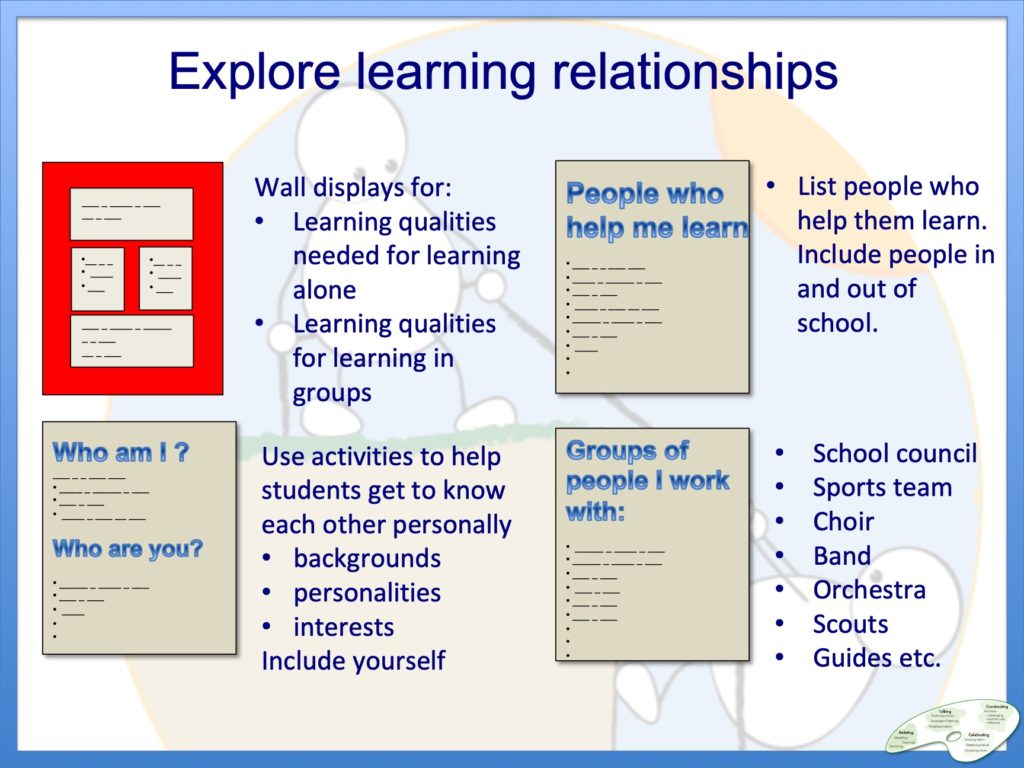
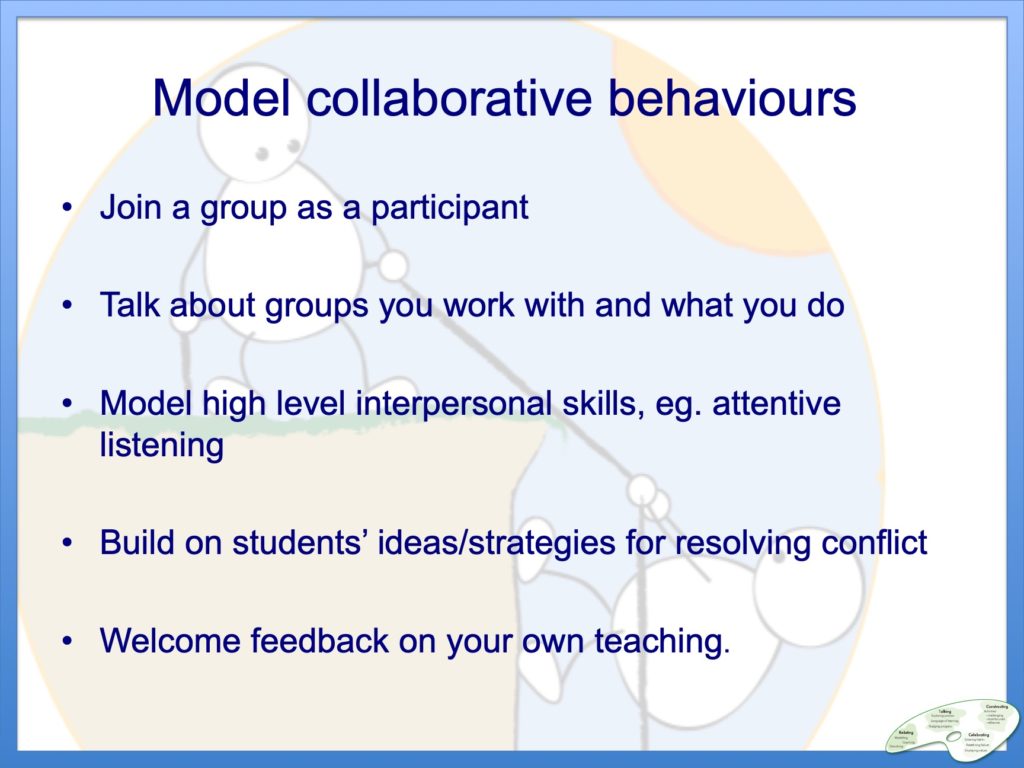
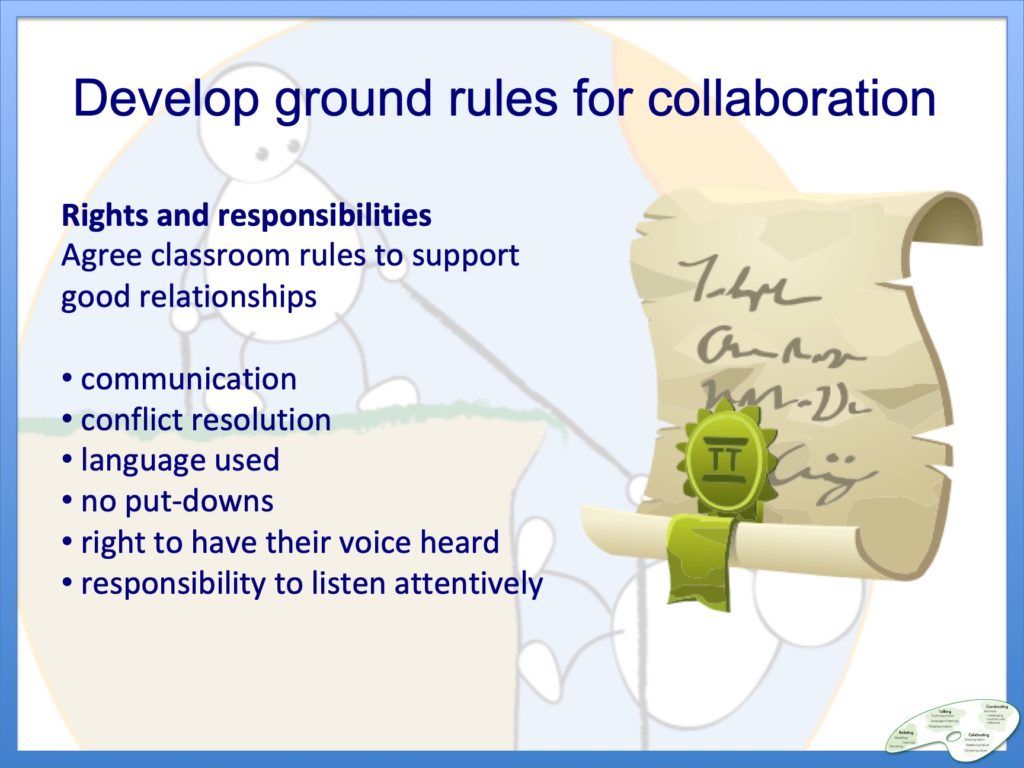
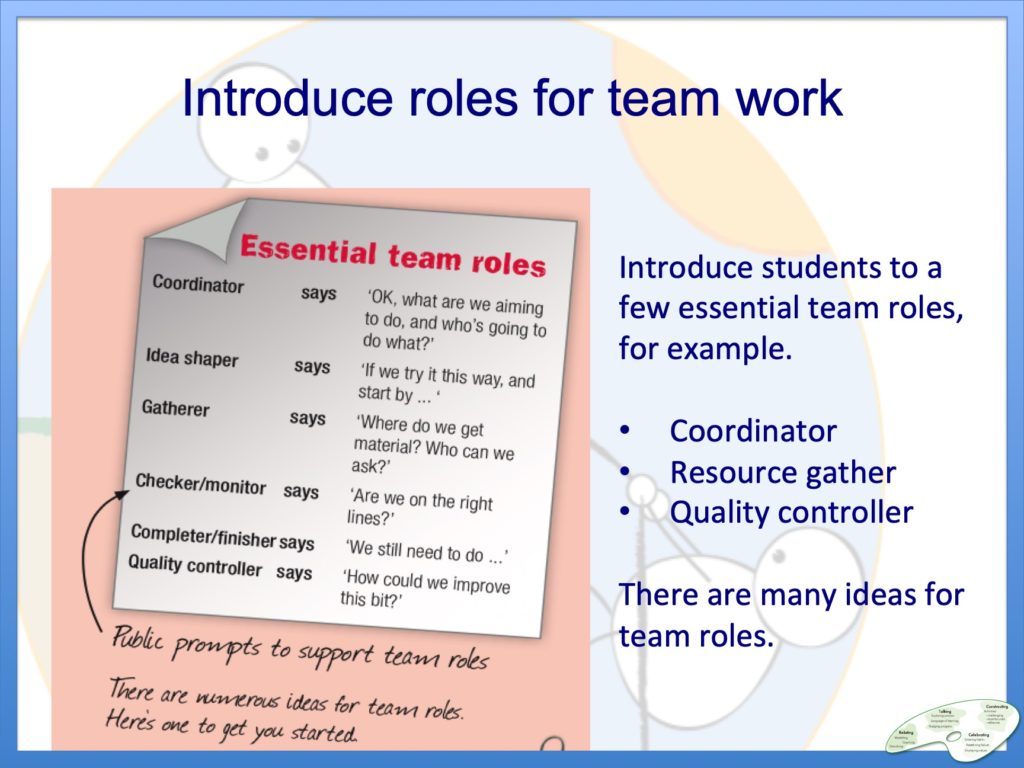
No comments yet.